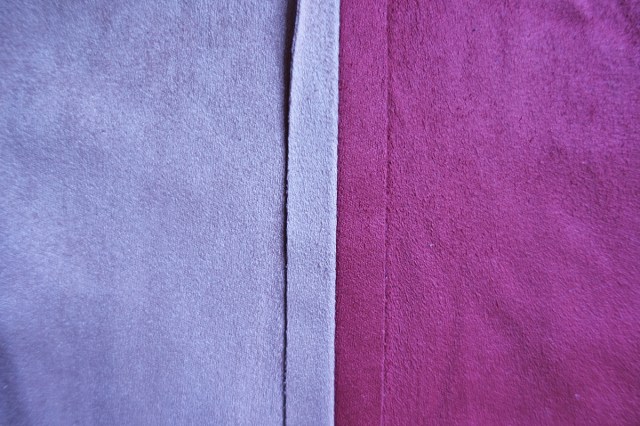
Extra Fabric in Seams and Hems
If you’ve ever peeked inside a suit jacket or at the hem on a pair of dress pants, you may have noticed a little more fabric than seems necessary. It’s not sloppy sewing — it’s actually quite the opposite.
Known as seam or hem allowances, this extra material allows for easy alterations. It’s not as common in mass-produced clothing, but in higher quality or tailored pieces, that extra fabric exists so the item can be adjusted, whether you need to let out the shoulders, lengthen the sleeves, or amend the waist.
Standard seam allowances are usually around one-half to five-eighths of an inch, but in garments made for alteration, they may be closer to 1 inch or more. Hems, especially on pants or coats, can have 2 or even 3 extra inches folded under. It’s a subtle but smart detail that could just give that favorite coat of yours a second life.
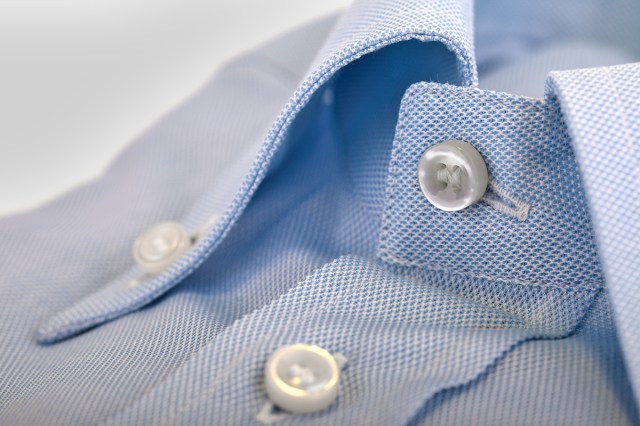
Horizontal Buttonholes
On many dress shirts, you’ll notice something a little different about the very top and bottom buttonholes: They’re horizontal openings, while the rest are vertical. This subtle variation is a clever way to help keep those buttons from popping open.
Vertical buttonholes are easier to fasten, but that also means they’re easier to unfasten, which isn’t ideal in high-stress spots such as the collar or waist. Horizontal buttonholes make the top and bottom buttons less likely to pop open when you adjust your tie, tug on your collar or shirt hem, or tuck and untuck your shirt.
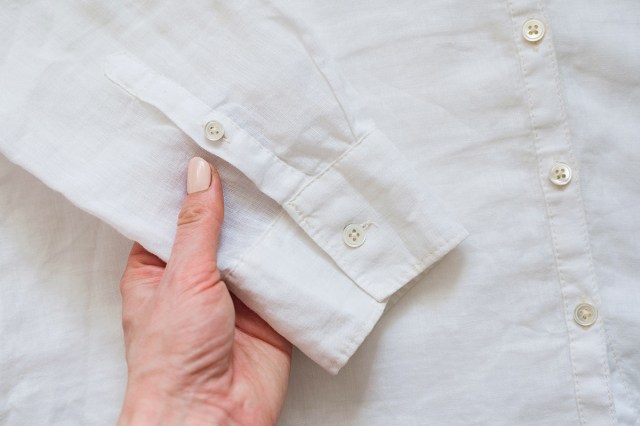
Sleeve Plackets
Most button-up shirts have plackets, aka a reinforced opening in a garment. It’s typically held shut with buttons, snaps, or a zipper, and its purpose is to make a garment easier to get on or off.
On a dress shirt or blouse, for instance, a placket holds the buttons that fasten the shirt. And sleeve plackets allow the cuff to open up wider so you can easily slide your hand through or roll up your sleeves without stretching or tearing the fabric. Without this, your options would be tight cuffs or oversized sleeves — neither of which is especially ideal.
A standard sleeve placket has a peaked “roof” shape at the top and two overlapping sections: a wider strip roughly 6 inches long and an underlap that’s usually around half an inch. This key part of a shirt sleeve’s construction also helps the cuff lie flat and look polished when buttoned, a small but thoughtful detail that does a lot of quiet work.
More Interesting Reads
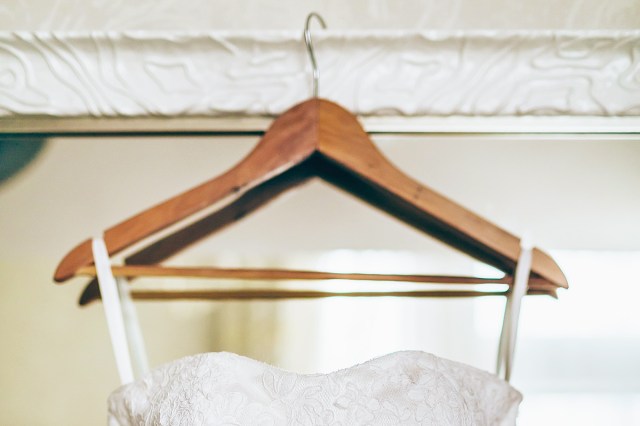
Hanger Strings
You’ve probably noticed thin ribbon, string, or even clear rubbery loops dangling from the inside shoulders of sweaters or dresses. They seem to serve no purpose (other than perhaps being slightly annoying) when you’re wearing the garment. But those strange little strings are actually very helpful, ensuring slippery clothes stay put on your hangers.
By looping them over the hanger hooks, they help distribute the weight of the item more evenly across the hanger and prevent wide or delicate necklines from sliding off and ending up crumpled on the closet floor. They’re not glamorous, and many people just cut them off, but for structured storage, they’re quite practical.

Shoulder Straps
You’ll see them on trench coats and leather jackets and motorcycle jackets: short straps on the shoulders, usually snapped closed near the collar. They’re also called epaulettes, and while they’re mostly decorative today, they have a practical history.
The word “epaulette” comes from epaule, a French word for shoulder. Early epaulettes were simple cloth straps used to keep sashes, belts, or gear from slipping — a handy feature for soldiers carrying bags, rifles, or swords. They were also a way to display rank, with embroidered insignia placed on the strap or near the rounded portion around the edge of the shoulder.
In the 1830s, both the U.S. Army and Navy began phasing them out of everyday uniforms in favor of flat shoulder straps, partly because the raised epaulettes were considered too conspicuous. But the style stuck around. On modern motorcycle jackets, shoulder straps can still serve a functional purpose by helping keep bag straps from sliding while riding. Whether or not you use them that way — or ever even thought to at all — they’re a time-tested nod to utility.
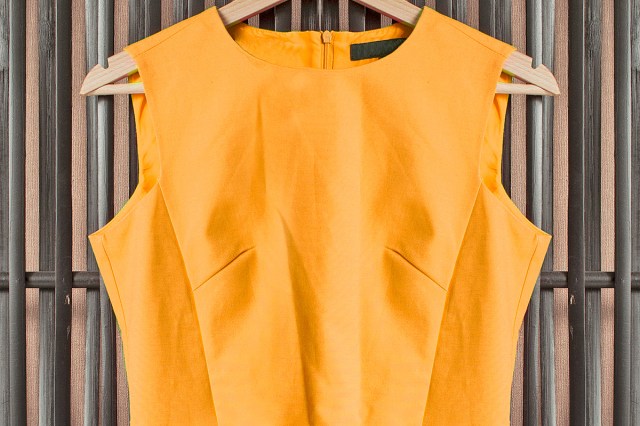
Material Darts
If you’ve ever noticed small, triangle-shaped seams near the bust or waist of a shirt or dress, they aren’t the same as the V-shaped “Dorito” near a sweatshirt collar — what you’re looking at are actually called “darts.” These stitched folds help shape the garment to the human body, creating structure and definition in all the right places.
Darts allow designers and sewists to contour clothing without relying on stretchy fabrics or loose fits. You’ll find them most often in tailored items such as blouses, dresses, and suit jackets, subtly transforming otherwise flat fabric into a three-dimensional shape that drapes over your body the way it should.
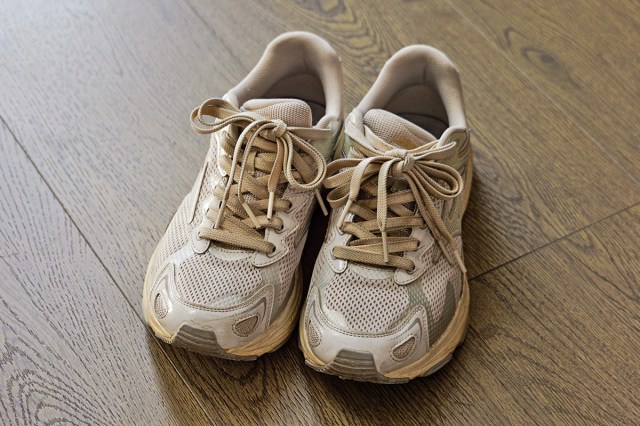
Heel Locks
Some athletic shoes have extra eyelets near the top, set a bit back from the rest, that don’t seem to have much of a reason for being there. Maybe you’ve ignored them, assuming they were simply decorative, or perhaps you’ve included them when lacing up your kicks.
If the latter is the case, you’ve accidentally discovered heel-lock lacing. Also called a runner’s loop, using these heel locks helps create a tighter fit around the ankle to keep your heel from sliding around (which can happen even if your running shoes fit well).
To lock that heel in, loop each lace through the top eyelet on the same side to form a small loop, then cross the laces and pull them through the opposite loops before tying a regular bow. They’re not strictly necessary, but if you’ve got the eyelets, you’ve got the option — and your feet will probably thank you for it.












